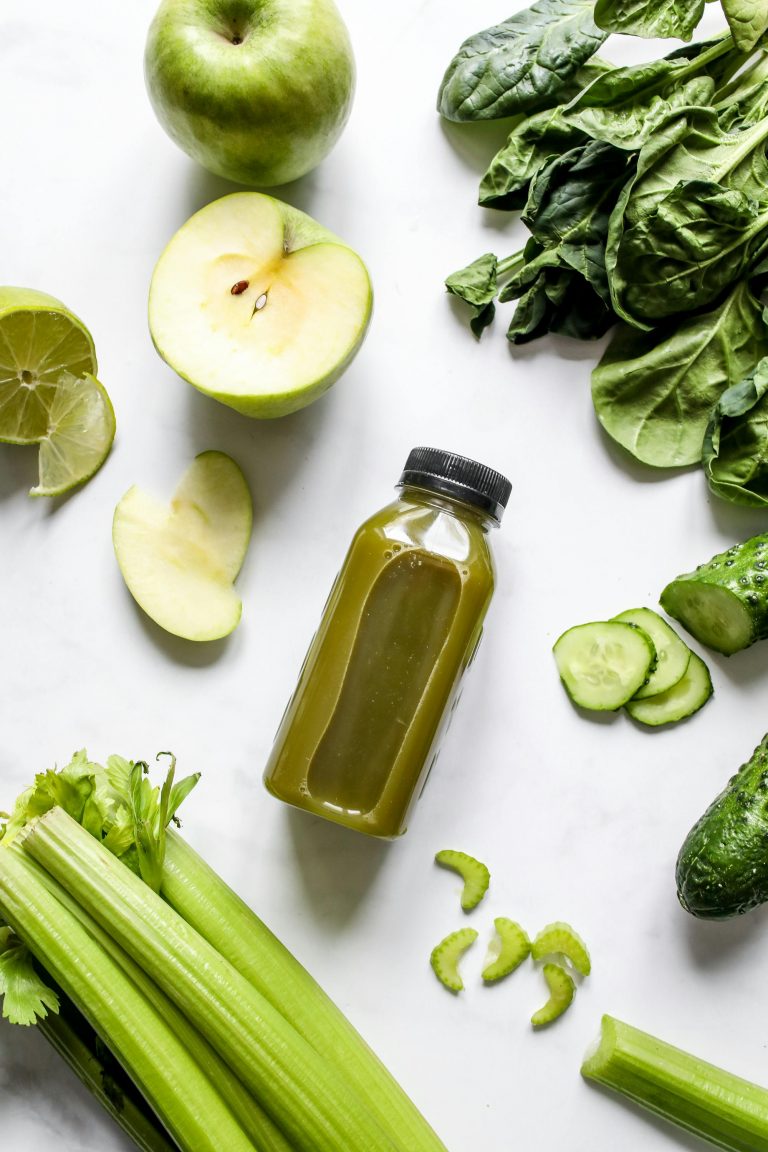Refreshing, nutrient-dense and vibrant, green juice has become a go-to for health enthusiasts. Made from leafy greens, fresh veggies and a touch of fruit, it’s packed with vitamins, minerals and antioxidants that support everything from your immune system to your skin. But while it comes with plenty of benefits, it’s worth knowing the potential downsides too.
Benefits of green juice
Green juice is usually made with fruits and vegetables like celery, kale, Swiss chard, spinach, wheatgrass, cucumber, parsley, mint, apple, ginger, kiwi, lemons, oranges, grapefruit and sometimes even pineapple. Although the most dedicated ‘green juicers’ stick with green fruits and vegetables, and make it fresh almost daily, many people like adding sweeter fruits or opt to buy in-store or from their local café.
Since this beverage is packed with a bunch of fruits and vegetables, your body will have access to excellent sources of vitamins (A, K, and C), iron, antioxidants, and prebiotics. Research suggests that consuming green juice regularly may:
- reduce inflammation
- lower heart disease risk
- lower the risk of age-related mental decline
- reduced constipation
- weight management
- improved immune function
- improved gut health (green juice may act as a prebiotic that feeds and supports the growth of beneficial bacteria in your digestive tract)
- a convenient way to boost your daily intake of valuable nutrients
- lead to glowing skin
However many health benefits there may be with daily consumption of green juice, it is not a substitute for a balanced and healthy diet. Moreover, too much consumption of green juice, or replacing your diet with green juice, can lead to a few complications, such as:
- Low fibre: Since fruit and vegetables are squeezed for their juices and their pulp is discarded, green juice has little to no fibre. Without it, your body is at risk of high cholesterol, blood sugar, and blood pressure levels. Moreover, fibre may also relieve certain digestive disorders like acid reflux, diverticulitis, and intestinal ulcers.
- Risk of high blood pressure: If you have diabetes or another medical condition that leaves your body with poorly controlled blood sugar, green juices with fruits may not be the best option for you. Their high sugar contents and low fibre and protein put your body at risk of uncontrolled blood sugar levels. Green juices without any fruits or added sugars are a better option.
- Kidney damage: Green vegetables are rich in oxalic acid, or oxalate, and green juices tend to contain highly concentrated sources. Oxalate binds to minerals in food and stops your digestive tract from absorbing them. Too many oxalates can lead to negative health effects, including kidney stones and even kidney failure.
- Excess amounts of sugars, additives and preservatives: Commercially-produced green juices tend to have additional sugars, additives, and preservatives in them. Although safe in moderation, excessive amounts can lead to negative health effects like spikes in blood sugar, risk of heart diseases and allergies.
Overall, green juice is healthy when consumed in moderation, but lacks certain important nutrients like fibre and protein. Drinking too much, or using it to substitute your usual intake of vegetables and fruits, can lead to blood sugar and kidney risks or diseases.
Ratios
Not all green juices are made equally. Everyone tends to use their own ratios to suit their palate, but the general rule to follow when starting is 80:20. Vegetables make up 80% and fruits 20%: this ratio provides more beneficial vitamins and minerals from vegetables and a small amount of sugar from fruits.
Easy green juice recipe
Give our celery, apple, kale, spinach, lime and ginger green juice a try!
Also See: The health benefits of celery juice

